Baroque style in the interior
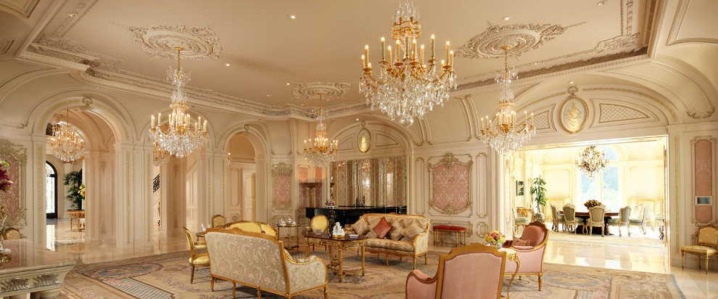
Lovers of antique interiors and extraordinary premises should immediately find out what the Baroque style is. It is necessary to take into account the peculiarities of the interior and design of rooms in the house and in the apartment. It is equally important to pay attention to the key features of the modern baroque style, its main colors, furniture, textiles and much more.
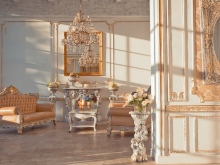
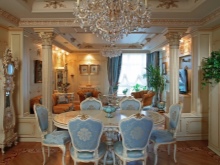
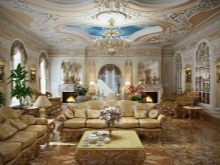
History of origin
Many people know that the Baroque style appeared in Italian cities in the 17th century. But its features are due not only to the technical level of that time. Historical circumstances, of course, also played an important role. Curiously, the contemporaries themselves simply did not know such a term. It appeared only much later, in the 18th century, and initially had a purely negative meaning.
Then it was believed that the Baroque era brought only one decadent motives and disharmony, leaving only a crude and vulgar legacy. But later the estimates changed. At that time, the radical anthropocentrism, characteristic of the previous Renaissance, faded into the background. In culture, more and more attention is paid to the ambiguity and even tragedy of human existence, to personal experiences.
The Baroque period did not come everywhere at the same time - in different places the "resilience" of the Renaissance culture was different.

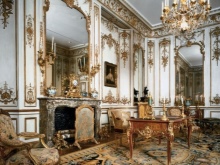
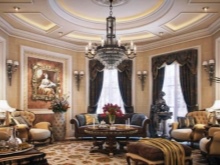
Interestingly, the consciousness of people was influenced in the strongest way by the large-scale scientific achievements of that time. The boundaries of the universe (in astronomy, in geography, in the microworld) have significantly expanded. Life began to be perceived as much more precarious than before. This attitude also reflected:
- The Dutch and English revolutions, which marked the irrevocable decline of feudalism;
- Thirty Years' War;
- expansion of the scale of colonization;
- reformation and counter-reformation;
- the first steps of technical progress.

Specific traits
Describing the features of the Baroque style, they often pay attention that this is a very pretentious design option. However, this understanding is very simplistic. Indeed, in this style, there is invariably an application for a certain way of life. Experienced designers always focus on:
- expressive splendor;
- flowery form;
- grandiose appearance;
- solemnity (and even pathos);
- emphasized luxury and splendor (but without the slightest hint of bad taste).
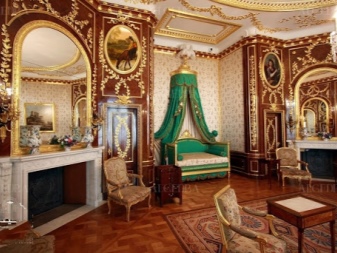

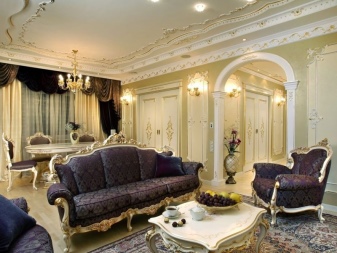
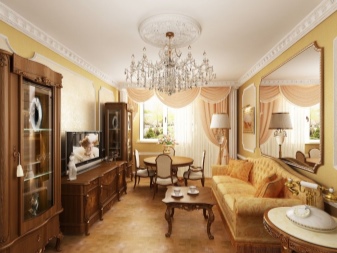
An interior of this kind is always dynamic and intensely expresses feelings. It is visually intense and contains many contrasts. Reality intertwines with fantasy to such an extent that it is difficult to separate them from each other. Emphasis is placed on the sensual enjoyment of life. Dynamic geometric shapes and curved contours are the key elements of the baroque composition in the house.
Rhythms and scales contrast with each other. The contrast also applies to the ratio of light and shadow, various materials and textures. Allegories and assimilations, complex architectural and design metaphors, and other expressive art forms are necessarily used. Since only a few people possess the necessary knowledge and level of artistic taste, baroque interiors invariably belong to the elite category.
Balanced proportions are abandoned in favor of complex geometric and varied forms, but axial symmetry is invariably used.
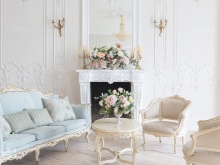
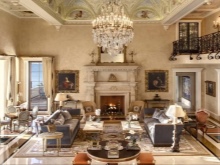
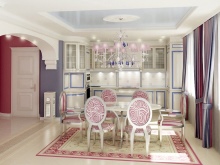
The dominant themes in the classical version of the Baroque are religious and mythological subjects. There should not be any stereotypes; a strict individuality is required. The observer should be extraordinarily surprised and delighted with what he sees. The goal of the baroque composition is achieved when it is perceived as a huge, magnificent and even monumental spectacle. When in the past this style was accused of bad taste, the reason for this was a deliberate violation of the ancient architectural order, which for centuries was perceived as an unshakable norm.
The approach varied significantly in each country. So, in France, baroque manifested itself mainly inside buildings, and classicism prevailed on the facades. One of the few notable exceptions is the sculptures on the facade of the Palace of Versailles; inside it, the Baroque spirit is embodied by the Halls of War and Peace, as well as the Mirror Gallery.

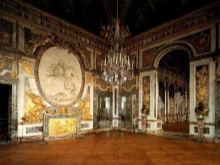

Spain and Portugal largely followed the French approach. In Russia, this style has gone through a long period of development, from the “Naryshkin Baroque” to the end of the 18th century, when classicism finally triumphs. You can imitate any of the iconic buildings erected over the same 100-odd years.
The modern baroque style is somewhat different from its prototypes. In this version, of course, the general spirit is preserved, but advanced building and finishing materials can already be used. The project usually rethinks old design solutions and approaches. They try to maximize the functionality of the entire building and its individual parts.
Modern baroque is appropriate not only in a private dwelling; it is eagerly used by owners of hotels and restaurants.
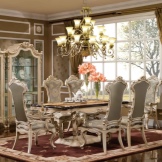
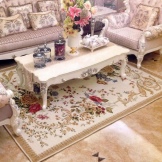
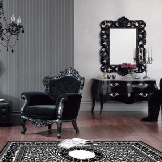

Application in the interior
To create a baroque interior, you need to use certain materials, suitable colors, choose stylish accessories, furniture, textiles. Let's dwell on each point in more detail.
Materials (edit)
Since in any branch of the baroque approach, the emphasis is on high cost and chic, it is quite justified to combine elite materials inside the house. Both walls and interior doors, furniture, ceilings are finished with:
- natural stone;
- bronze;
- beautiful plaster;
- crystal (of course, given what material is appropriate in which case).
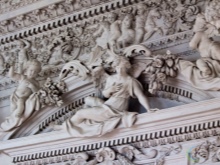
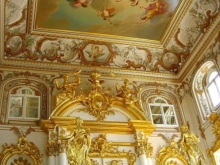
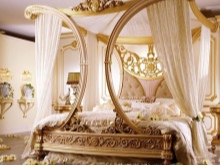
If wood is used in such a house, then it always belongs to the expensive species. It would be very foolish to skimp on purchasing the same mahogany. Unnatural (synthetic) materials cannot be used for finishing. Even if they fit outwardly into an 18th-century-style setting (which is already highly doubtful), the purity of the experiment is violated.
Sometimes it turns out to be more profitable to consult with professionals.
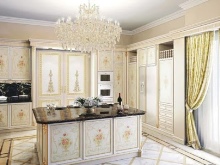

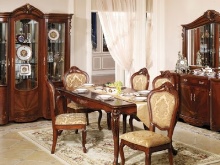
Colors
Baroque décor is traditionally associated with olive, blue, cream and vanilla tones. Such paints can often be seen in photographs of the interior of architectural monuments. But without any problems, it is also possible to use blue, terracotta, burgundy, green and scarlet colors (and even their concentrated shades). However, the dominant role should still be played by gold and silver. Yes, there are not so many of them, but it is these colors that set the general tone and “tie” the gamut together.
Where blue and blue tones are mixed, the effect of a fresh, elegant space is obtained. Silver elements and the shine of unfinished crystal can visually make the room more palatial. An alternative solution is to use coffee shades. They can be used in various parts of the room and even in decorative items.
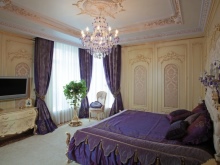
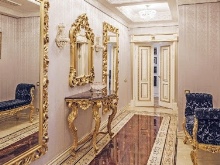

Some designers also recommend using:
- turquoise;
- white and gold combination;
- combinations of ash pink and brown tones;
- wine, malachite colors.
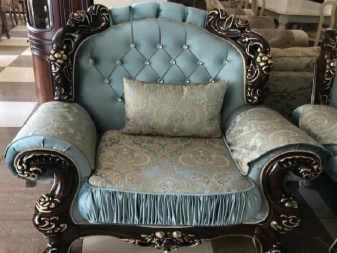

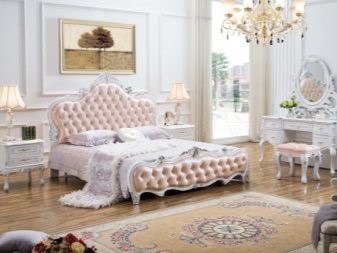
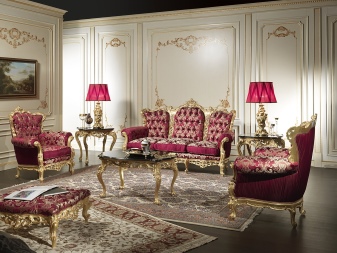
Furniture
Baroque is a very complex and elegant style. When using it, they will certainly form an integral ensemble, the structure of which should also include furniture. Violation of this rule creates a sense of a “warehouse of different things”. In a baroque setting, only massive furniture with pretentious contours is appropriate. The presence of graceful bends, sophisticated carving is welcomed.
If you have enough funds, you can buy models from the array. Visual analogs turn out to be a little cheaper, in which only the facade is made from the array, and the rest is made from cheaper materials. A baroque sofa is certainly upholstered with textiles, best of all with a pattern in the form of a narrow strip.
Important: leather sofas will definitely be unacceptable.

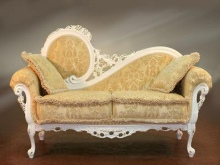

Beds in a Baroque interior should look exclusively "royal", and this rule applies both to size and design features. Not only one base of the bed is carved, but also the legs; the beauty of the headboard will play a significant role.
The bed in the spirit of baroque "antique" is made by various Romanian and Italian manufacturers. Such products are very expensive. But the quality is worth it. Often, even stucco molding is used as part of furniture products. Of the ornaments, the most attractive are plant subjects and "garlands"; it is advisable to buy furniture with concave and convex parts.
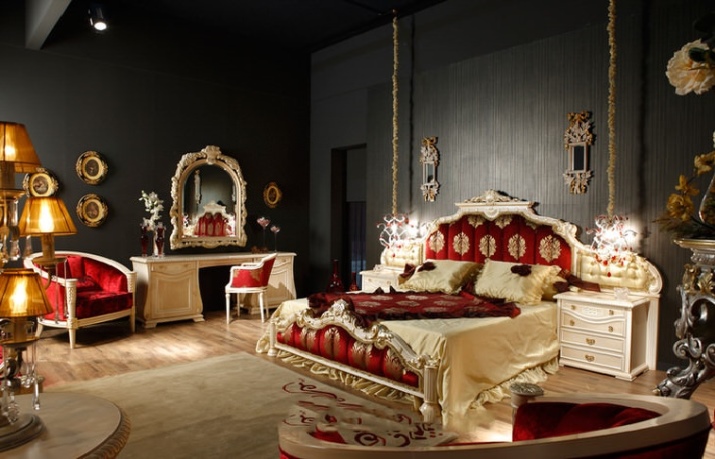
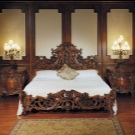
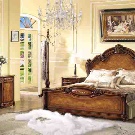
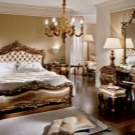
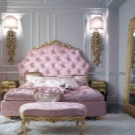
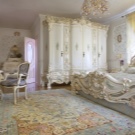
Textile
Natural materials are an impeccable solution for this style. However, not all of them are suitable - cotton and linen will be completely inappropriate. Textiles must look expensive; we are talking both about their quality and about a non-standard pattern. First of all, these are materials such as:
- silk;
- tapestry;
- brocade;
- atlas.

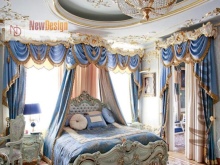
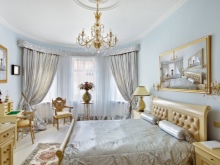
The textile components of the interior are selected so that they fit into the overall composition. That is why fabrics and patterns found in furniture upholstery must certainly be reproduced in window décor. Curtains are very important, and light fabrics should not be used for them. Only heavy materials are needed to form a strict look.
Sometimes translucent curtains are also used, but they must necessarily reach the floor, ideally with the formation of folds.
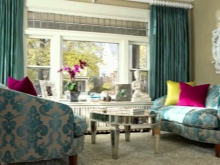
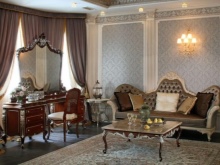
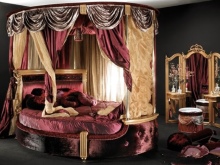
Accessories
Decorative items are selected solely according to one criterion - how luxurious they will be. Chests and boxes of various sizes will be quite appropriate. It is very good if they are inlaid with stones. Another good option is items with a gold or silver layer. Additionally, you can use for decoration:
- canvases by various artists (suitable in content);
- ceramic items (dishes, figurines, sculptures);
- floor vases;
- mirrors in carved wooden frames;
- vintage photo frames.
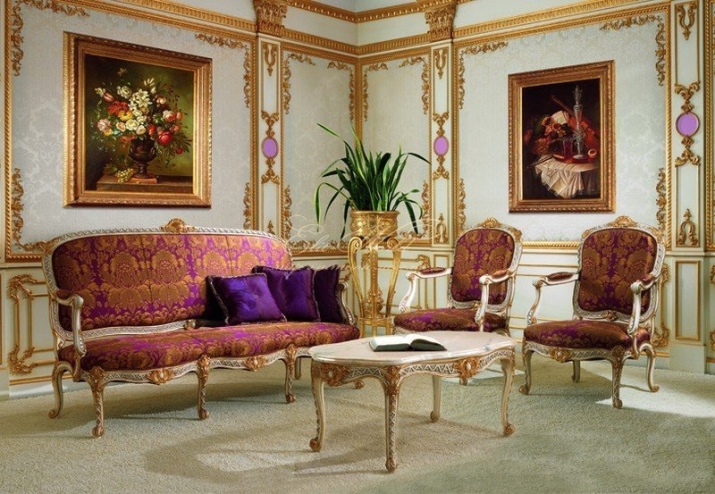

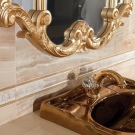
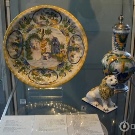
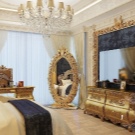
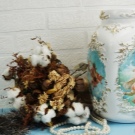
How to decorate different rooms?
Each of the rooms in the dwelling can be decorated in a baroque style.
Dining room
It is recommended to put the most beautiful headsets in the kitchen and dining areas of an apartment or house. The use of painted furniture is also advised. (with the inclusion of openwork details). Silk or velvet fabrics are used for upholstery, preferably with a pattern. To create the most refined interior, it is advisable to decorate the space with stone.
Sofa cushions must be hand-stitched.
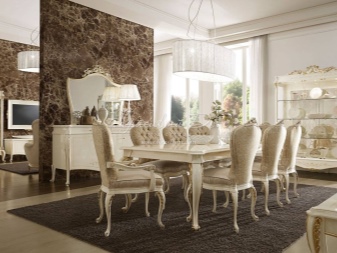
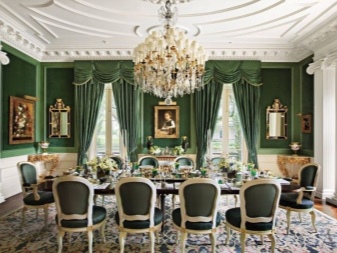
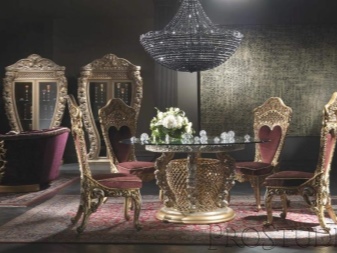
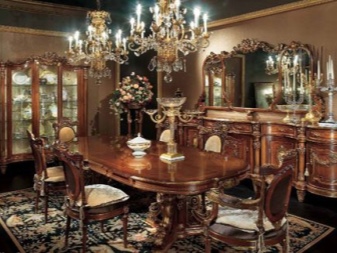
Living room
The design of even a small guest room implies the use of large fireplaces with non-standard finishes and selected textiles. The use of valuable wood is encouraged. Tones are selected with the expectation of emphasizing the depth of space and the formation of contrast. Experts advise to give preference to burgundy, green, black and white colors. When repairing walls, door and window frames are often encrusted; you can also use plaster with stucco inclusions and imitate columns.
The ceiling in the baroque living room is decorated with arches and painted. A crystal chandelier will be gorgeous. Parquet should be laid on the floor.And also the floor is sometimes trimmed with natural stone or covered with a lush carpet. Decorative items are complemented with fringes, ruffles and bugles.
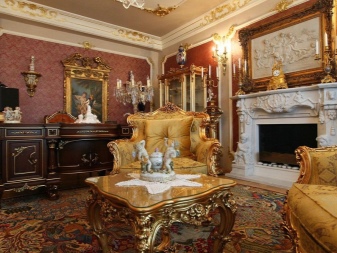
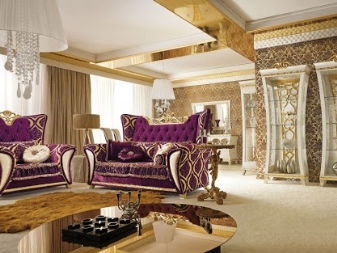
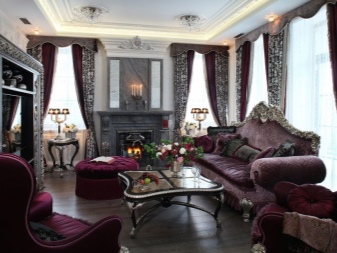
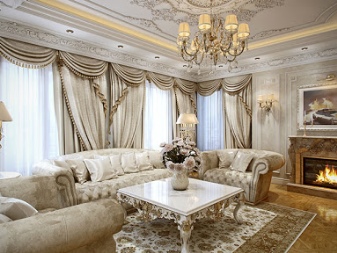
The bedroom
Such a room can be created by:
- decorative plaster;
- plaster moldings;
- paper wallpaper with a golden print;
- a multi-layer ceiling containing LED lamps with a warm glow spectrum.
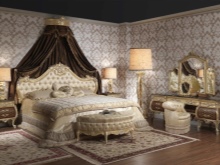
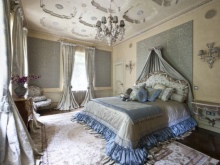
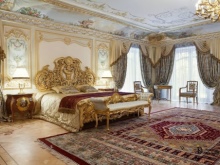
Wide moldings with a pronounced relief are placed at the corners of the ceiling. The floor is decorated with marble tiles or complex parquet flooring.
Important: the color of all finishing materials must match the overall tone of the room. Milk, white, beige and light yellow colors are preferred, forming a warm and cozy space. The bed has an average size of 2x3 m or even more, complemented by a high soft headboard and an air canopy.
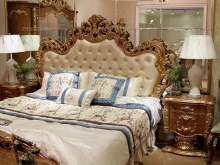
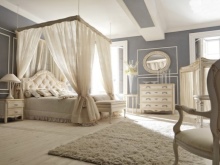

Hallway
The layout of furniture is thought out so that even with full saturation with it, there is still quite a lot of free space. The space for accessories is also taken into account. Curved lines are required everywhere. Even a straight decorative column is not as appropriate as its twisted counterpart. Stucco molding is also required, ideally complemented by gilding.
Greet:
- painting in the form of frescoes;
- multilayer curtains and draperies;
- an abundance of mirrors;
- bright hues.
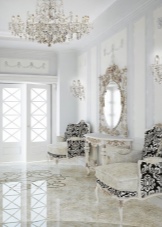
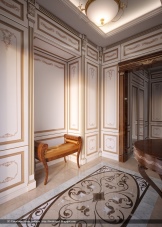
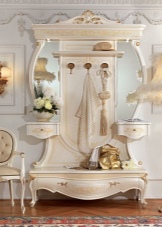
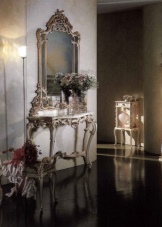
The classic baroque study includes round and rectangular tables. Along the edges they are inlaid and decorated with carvings. If you have enough money, you can purchase ebony furniture. Cabinets can be fitted with steel plates and mosaics.
A good study includes dressers, desks and coffee tables, sofas, chairs and armchairs.
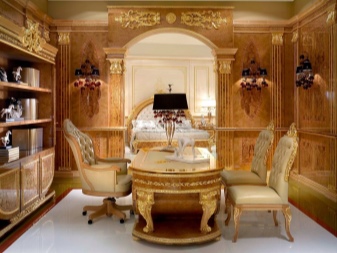
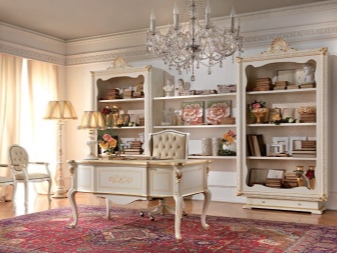
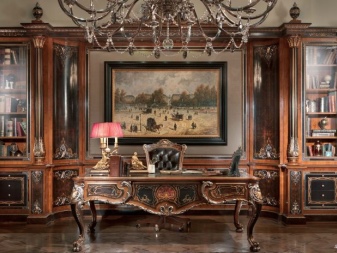
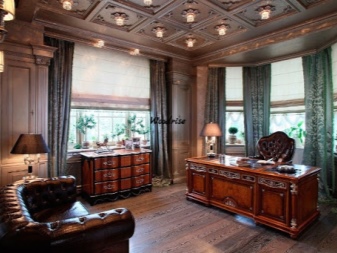
Children's
Such a room, when decorated in the Baroque style, has a pale pink or blue color (in all possible shades). In addition to painting walls, these colors are used to decorate other parts of the room. The color is also created using the already mentioned golden and white paints. Indispensable features will be:
- the presence of a canopy;
- the use of lace;
- hanging paintings in the style of rococo;
- light furniture with abundant carvings;
- themed applications for furniture;
- textiles in soft pastel colors.
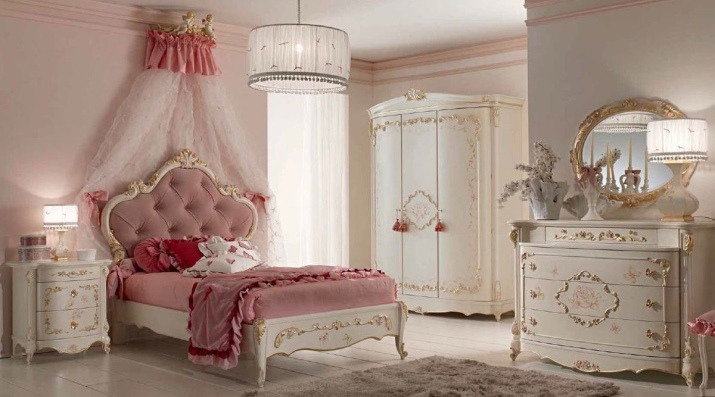
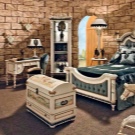
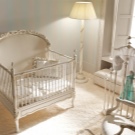
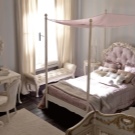
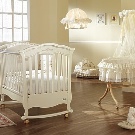
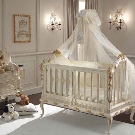
Beautiful examples
The photo shows an attractive baroque bedroom. The white color is diluted with golden splashes. Furniture with carved curly legs, decorative pillows and other characteristic decorative elements are skillfully applied.
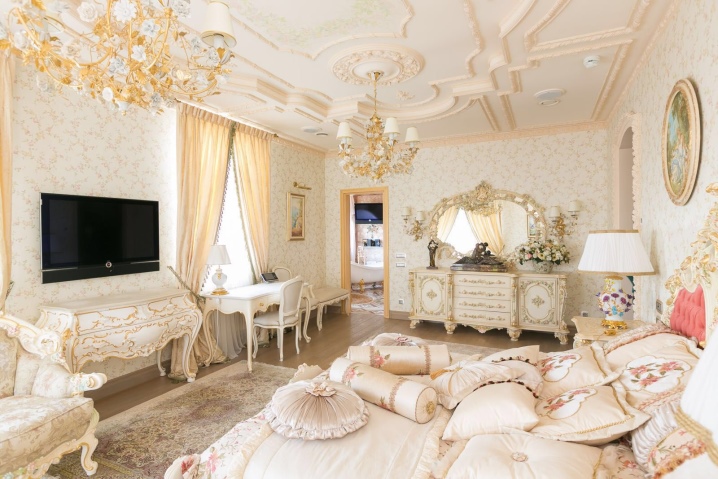
But you can do otherwise, using a combination of light and dark tones to decorate a baroque living room.
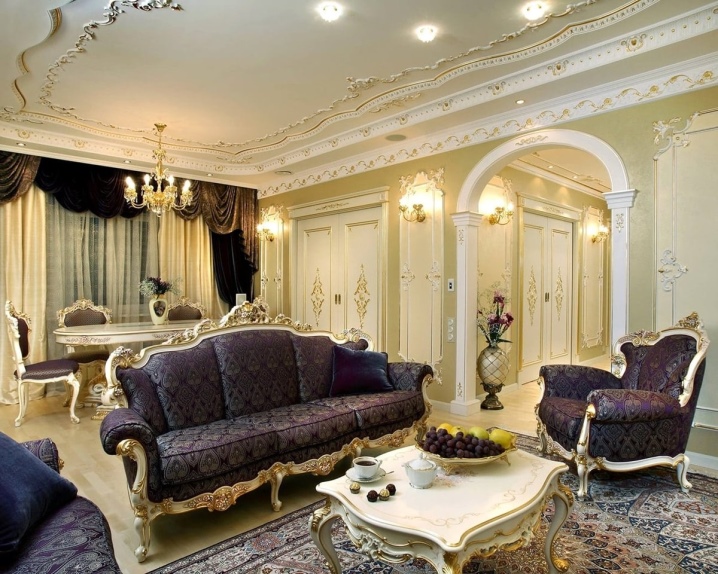
And you can also look at such a sample - a baroque kitchen, where format features are also shown using white and yellow colors and many curly elements.
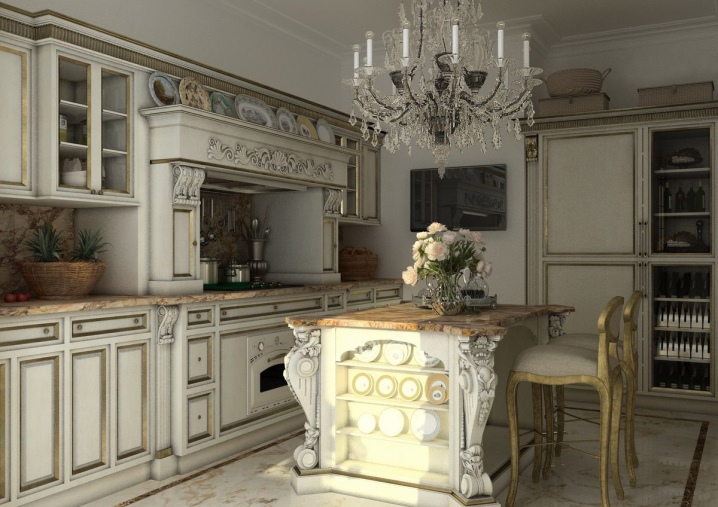
The secrets of the Baroque style in the video below.













The comment was sent successfully.